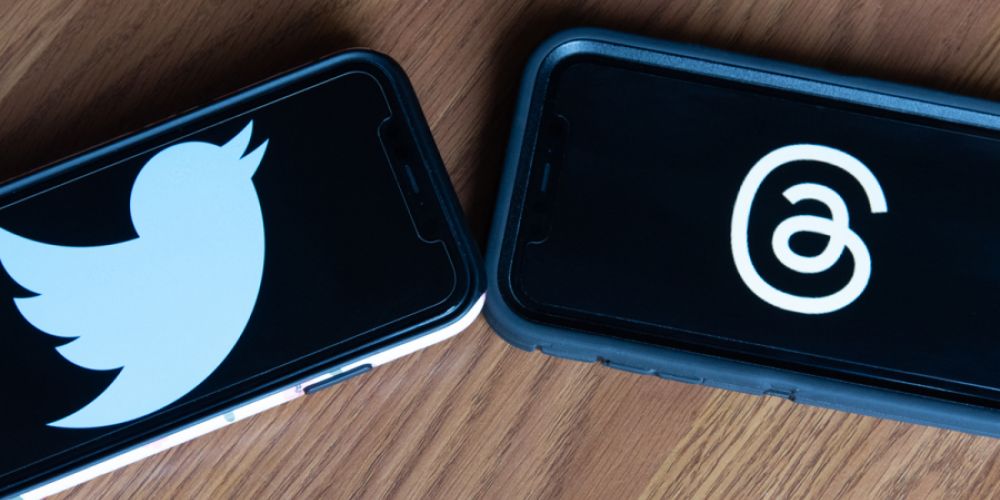
Is Meta Threads a Twitter killer? The answer may surprise you.
REWRITING THE LANDSCAPE
Meta bills Threads as a new app “for sharing tech updates and joining public conversations.”
At first glance, it looks a lot like a mashup of Twitter and Instagram. The visual language is all Instagram, while the functions are reminiscent of early-days Twitter – before the bots, the trolls, and the Elon Musk-imposed daily usage limits.
None of this is a surprise given how Meta itself describes Threads:
“Instagram is where billions of people around the world connect over photos and videos. Our vision with Threads is to take what Instagram does best and expand that to text, creating a positive and creative space to express your ideas. Just like on Instagram, with Threads you can follow and connect with friends and creators who share your interests – including the people you follow on Instagram and beyond.”
Already, critics note a distinct lack of certain features, including support for hashtags, direct messaging, editing, or a “people you follow” feed. Instead, the interface presents a single feed that confusingly lumps together users we follow and users we don’t.
Meta is also raising questions around its decision to tie the Threads and Instagram accounts so closely together that deleting Threads will also delete the Instagram account to which it was originally linked. The company explains that’s because the Threads profile is, by design, an integral part of the corresponding Instagram account. Regardless, this architectural quirk serves as yet another reminder to read the terms of use carefully.
None of this is a surprise, as this is a typical v1.0 release. To the company’s credit, though, head of Instagram Adam Mosseri is already responding to requests from users, and says they’re working on a list of features to add in future, including, but not limited to, hashtags, a followed-users feed, and the ability to edit Threads.
Launch quibbles aside, expect the Threads stampede to burn bright for at least the next little while. It’s early days yet, and the new platform will evolve over time. Already, Threads has a higher character limit per post (500 vs. Twitter’s 280), longer video limit (5 minutes vs 2:20 on Twitter) and its support of longer conversations is more fully-baked than it is in the competition. By virtue of its very name, Threads makes it fairly easy to initiate, join, or follow an entire conversation, as it’s been architected from the ground up to work this way.
QUESTIONING THE FUTURE
The arrival of Threads reignites the long-running debate over whether the world even needs a Twitter alternative at all. Amid the rush to sign up for the new service, there’s a quieter but still consistent undercurrent of voices saying they will not join in.
Despite the hype over feature comparisons and big-ego billionaire clashes out in the market – and potentially within the ring if the Musk vs. Zuckerberg cage fight actually happens – the arrival of Threads represents something of an inflection point in the history of social media, perhaps the end of the Big Social era and the early stages of a transition into what we view as the Post-Social age. It means a growing number of people are questioning the why of social, and whether they’re getting out of it what they’re putting in.
Based on the experience of the last 15 to 20 years or so of social media – with its litany of concerning mental health impacts, trolls and cyberstalkers, rampant mis- and disinformation, and cyber stalking and cybercrime, among others – that equation is a negative one for many, and the debate over whether or not to register for Threads is part of a healthy – and long overdue – global discussion over how digital citizens ultimately want to spend their time.
SPRINGBOARDING OFF OF THE TRIED AND TRUE
Debates notwithstanding, what jumps out as particularly well-executed is the way Meta tied the Threads launch into Instagram. As new users first register on Threads, notifications fan out across their Instagram network. The registration process itself makes quick work of following any or all Instagram connections. The app even allows a user to follow someone in Threads before they’ve installed the app – and will then auto-follow that individual once they get on-board.
This deliberate integration with Instagram addresses the key reason why competing apps – notably Mastodon, Hive Social, Post News, and Jack Dorsey’s still-in-beta BlueSky – have all flared in initial popularity, only to fade back into relative obscurity as new users realized there was no one around to talk to. This is not the case with Threads, and that means it has a better chance than most to stick around beyond the honeymoon period.
Meta also has rather deep pockets, so it’s easy to see the company happily funding the new platform over time while Mr. Musk struggles to convince advertisers to return to Twitter. Notably, by Musk’s own estimate his initial $44 billion investment is now worth less than half that. He has famously clashed with vendors over payments for everything from rent, catering expenses, travel, and network services as part of a broader drive to cut costs.
Indeed, the arrival of Threads is a case of coincidentally perfect timing, as it comes immediately after Twitter’s latest decision to place significant limits on the number of tweets that can be viewed within a given day. Social media is based on maximum engagement and unlimited use, and this most recent edict spawned a particularly strong response among the Twitter community.
Notably, the limitations were imposed just before the June 30th renewal date for Twitter’s network services contract with Google Cloud.
THE LEGAL OPTION
To no one’s surprise, Twitter isn’t entirely pleased with Threads. Hours after its initial go-live, Musk had his lawyer, Alex Spiro, send a cease-and-desist letter to Meta CEO Mark Zuckerberg that says X. Corp., the holding company which owns Twitter, “has serious concerns that Meta Platforms has engaged in systematic, willful, and unlawful misappropriation of Twitter’s trade secrets and other intellectual property.”
The letter further accuses Meta of poaching Twitter’s staff: “Over the past year, Meta has hired dozens of former Twitter employees… these employees had and continue to have access to Twitter’s trade secrets and other highly confidential information.” The letter further explains, “The workers owe ongoing obligations to Twitter,” and many of these sale employees “have improperly retained Twitter documents and electronic devices.”
Meta says the claims are baseless, adding that no ex-Twitter employees were ever assigned to the Threads development team. Recall that Mr. Musk has laid off around three-quarters of Twitter employees since taking over, and he famously criticized some of them as they departed by saying they added “no value”.
The letter is a clear signal that Mr. Musk is worried about the new competition – as he should be.
THE BOTTOM LINE
Threads represents the biggest single threat to Twitter’s future, as it addresses virtually all of the technical failures built into previous wannabe-competitors, namely the fact that they all forced users to rebuild their networks from scratch.
While Threads is far from ideal in its current form, like any software developer with a reasonably mature understanding of how software development is supposed to work, Meta is listening to its community, drawing up a roadmap for future updates, and communicating its strategy to stakeholders.
This is how software development is supposed to work. Meta seems to get it. Mr. Musk? We have our doubts.
Check back here over the next few weeks and months as we continue to share thought leadership on one of the most significant battles in the software and services space in recent memory. We’ve established our own account on the new platform – https://www.threads.net/@stepsoftware – and invite you to connect with us there, as well.


